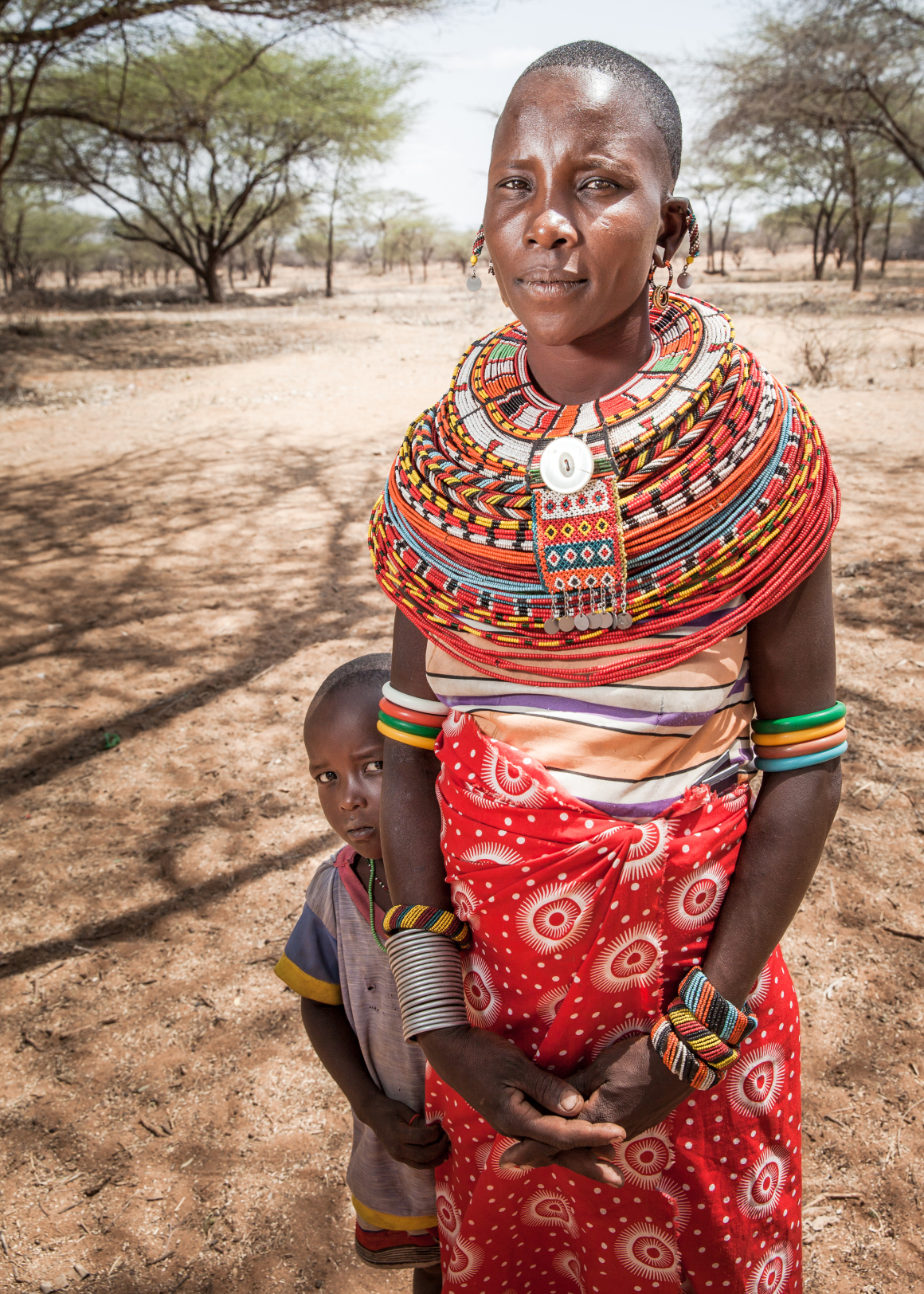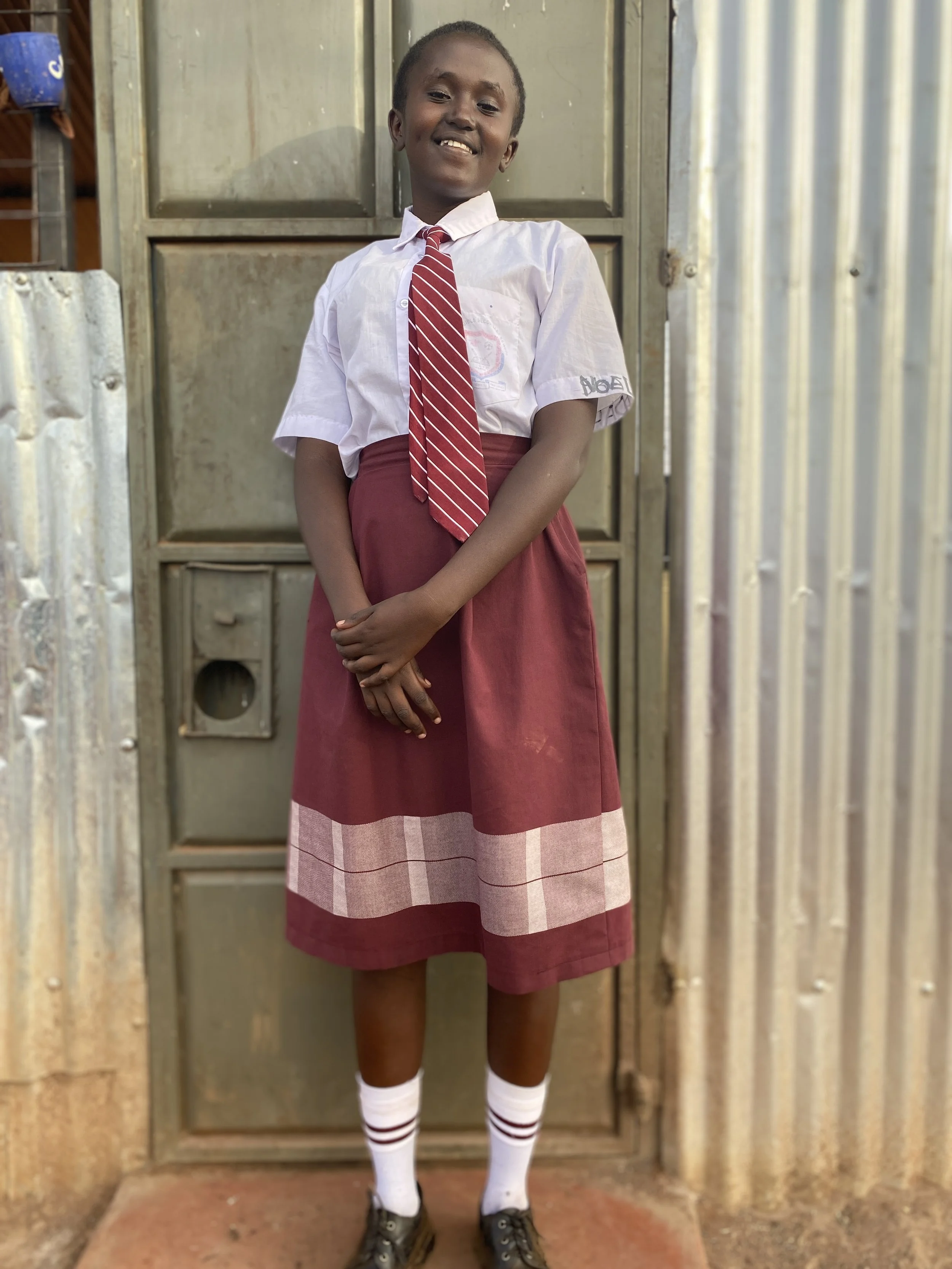Samburu Stories: Laresoro Community Well
After driving about 30 minutes from Archers Post we arrived at the well of the Laresoro Community, our first visit. From the sand, under the shade of the acacias, a wide pipe emerges. On one side a lever to pump, on the other the pipe, and at its feet a small ditch. Here is the miracle of water. The well serves numerous communities in the surrounding area; many women and children are waiting for us, smiling and welcoming. They greet us affectionately with the Maa salutation, "sopa," in a festive atmosphere. The women sing and dance to give us a warm welcome and their children, suspicious at the first instance, stare at us hiding behind the cheerful clothes of their mothers, clinging to their kangas.
This well serves a community of about 1,500 people. Women who previously used to walk up to 8 hours a day to get the water essential to be able to subsist, have, for the last three years, access to clean water in abundance, walking now between 5 and 30 minutes. This is the case of Lingoine Lekoloi, a petite woman, with a smile so sweet that it’s impossible to not smile back while you listen to her, wants to talk to me. She is here with her little one Mbaa, a 4 year old boy and the youngest of 5 siblings. While Mbaa pushes his toy, a roadrunner with rudimentary wheels made by his older brother with acacia twigs, Lingoine tells me that she comes twice every day, once at dawn and again at dusk to fill a 15-liter bottle. “I am extremely happy with the well. It has provided so much relief.” Drinking water without limits and without fear of contracting diseases is, undoubtedly, the main advantage of the well but it is by no means the only one. The health of the community has undergone a huge qualitative leap - the incidence of diarrhea, cholera and other serious diseases that were common before has dropped dramatically, and the toilet and cleaning habits have changed radically.
I ask her to tell me her daily routines. The first thing she does in the morning is to bathe her children and prepare them to go to school, after that she serves breakfast (milk or tea) to the family and goes to fetch firewood, cleans her hut, and goes to the well to wash. She prepares the food, ”rests" a little while she works with the color beads. Then she takes care of the cattle off-spring, review the boma's fence and return to the well one more time for water. By then it will be around six o'clock in the evening, when men return with the animals. Then she milks the goats and offers the milk to the whole family, collects the cattle and stores the excess milk after she sterilizes and flavors it with burnt branches (an ancestral technique that, she explains, keeps the milk in good condition for up to five days). Lingoine's story makes me think of the universal multitasking ability of women and suddenly I need to explain that, despite all the distances that separate us, I find great similarities between our lives ... she laughs.
Stay tuned for more Samburu Stories as we introduce you to other families in the Laresoro well community who benefit from clean water because of The Samburu Project and donors like you.
This Samburu Story was written by Cristina Saura and features photographs by Mamen Saura. Go to www.thesamburuproject.org to read more Samburu Stories and join the global TSP family to provide clean water to families in Samburu, Kenya.















Motioning over to the lush foothills glimmering in the distance, Kokomiano explained that, while a beautiful backdrop for many, these mountains only served as painful memories of the long journeys to find water under the heat of the sun. It wasn’t until he was fifty years old, when TSP drilled the Lengoloo well in his community, that he claims his life changed forever.